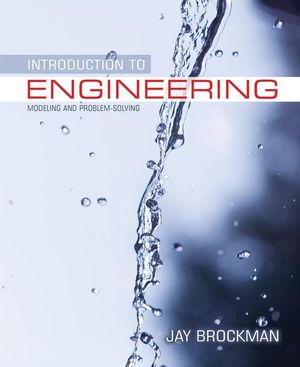|
Textbook
Introduction to Engineering: Modeling and Problem SolvingISBN: 978-0-471-43160-2
Hardcover
620 pages
April 2008, ©2009
 |
||||||
- Discusses actual engineering practice to motivate
students
- General skills and training to effectively contribute to society (see ch 1)
- Professional settings that employ engineers (see ch 1)
- Introduces students to important conceptual ideas that
support the engineering disciplines
- Emphasizes problem-solving paradigms including a basic framework and how and when different problem-solving techniques should be employed (see ch 2, 3 and problems throughout)
- Discusses concurrency, interdependence, and trade-offs in the development of engineering systems showing students how physical laws, economic, environmental, and user requirements interact in an engineering system—something they will address as practicing engineers. (see ch 4)
- Covers the modeling of systems and changes in systems familiarizes students with larger context of model-based design in which engineers actually design systems and ultimately solve problems. Introduces simple numerical methods for modeling change in systems without assuming any background in calculus (see chs 4, 5, and 6)
- Integrates MATLAB to build engineering problem-solving skills and MATLAB programming skills (see MATLAB appendices )



